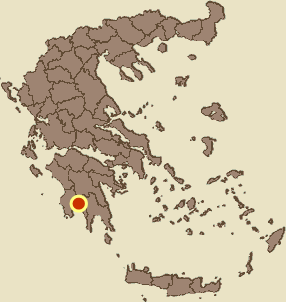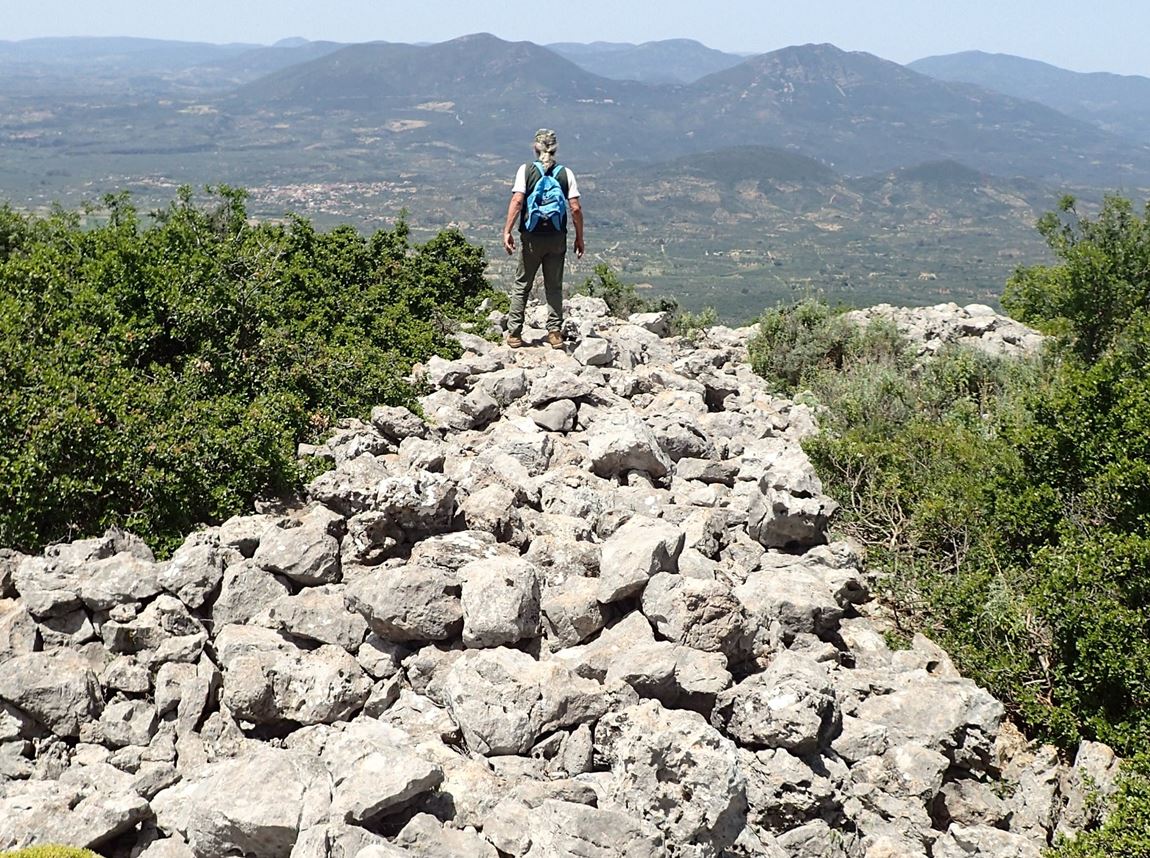Agios Floros, Kalamata, Messenia,Peloponnese
Castle of Agios Floros
| Location: |
| About 1400m NE of the village Agios Floros in Messinia, south Peloponnese |
| Region > Prefecture: |  |
| Peloponnese Messenia | |
| Municipality > Town: | |
| City of Kalamata • Agios Floros | |
| Altitude: | |
|
Elevation ≈ 475 m (Relative Height≈90 m) |
| Time of Construction | Origin | |
| Unknown | ANCIENT |
|
| Castle Type | Condition | |
| Dry-Stone Fortification |
In Ruins
|
Ruins of a castle of undetermined chronology on a narrow hill called “Castle” or “Kastrouli” 1400 meters northeast of the village of Agios Floros in Messinia. It has been labeled “Byzantine”, but it is probably much older.
History
The history of the castle is unknown. The dry-stone walls indicate a pre-classical era. Perhaps it was a fortification of the Late Helladic period (i.e. around the middle of the 2nd millennium BC) considering that in Messinia there are many sites and findings from that period. Some surface ceramic findings do not disprove this hypothesis.
The castle was probably used in subsequent periods as well and it is not excluded that it was actually used during the Byzantine Period as well. However, there are no findings that certify this. There is also absolutely no mention from historical sources about the castle.
The only evidence that could have created the suspicion that it was Byzantine is the fact that during the 14th century the place was on the border, approximately, of the dominion of the Despotate of Mystras with the lands of the Latins. It is also very close to the Byzantine castle of Pidima with which there should have been cooperation in defense.
Structure, Fortification & Buildings
Kastrouli Hill is an elongated high hill with a length of about 1000m on the North-South axis. The castle is located on the southern and higher side of the hill.
The castle is divided into two parts (which is also obvious from satellite). The first part, the northern part, has an area of about 3,000 sq.m. and is surrounded by strong walls 1.5-2 meters thick which are preserved at a low height. On the northern side of this section, an additional 80m long wall begins which seems to have been built to strengthen the north and east sides which are more vulnerable.
The second part, the southern part, is a little smaller with an area of 2,000 sq.m. It is also surrounded by strong walls which are now mostly stone piles. On the south side of the southern section there is also an additional wall, extending east, 65m long, which also seems to strengthen the defense of the vulnerable eastern side.
In total, the castle covered an area of 5,000 sq.m. That means that it was relatively small, therefore it was probably just a a small fort and not a settlement.
The walls are dry-stone, i.e. built without binding mortar. The stones that have been used are of various sizes without special treatment. This kind of unskilled masonry, as well as the shape of the fortification, indicate a construction older than the 1st millennium BC.
The ceramic fragments that exist, mainly in the somewhat smoother southern part of the acropolis, seem to be Prehistoric as well.
The position is excellent for defense, with good physical protection and with great visibility in the surrounding area. The view is amazing. There is visual contact with the entire Pamisos plain as far as the Messinian Gulf to the south. To the west, low down, you can see Agios Floros and the sources of the Pamisos river and in the background the mountain of Ithomi. To the south, there is visual contact with the castle of Pidima, while to the north there is visual contact with the ancient acropolis of Tsoukalaika. To the east the position controlled the passes to Taygetus and Laconia.
In addition, there is another fortified structure in the area, outside and independent of the castle, but of more or less the same era. It is a wall with the local name “Aradaria”, which starts east from Agios Floros. It is about 1000 meters long and ends at the western foot of the hill where the cauldron is located.
| First entry in Kastrologos: | July 2023 |
Sources
- WebsiteΑριστομένης ο Μεσσήνιος - Θέση Κάστρο, Aγιος Φλώρος Μεσσηνίας (source of the photos - May 2022)
- Info and photos Peter Barkevics (in cooperation with Aristomenes)
|
|
| Access |
|---|
| Approach to the monument: |
| Access from the village of Vromovrysi from where a dirt road starts to the SW and then goes south, parallel to the ridge. The ascent is difficult due to the vegetation, and is through the dirt road on the east side. |
| Entrance: |
| Free access |








